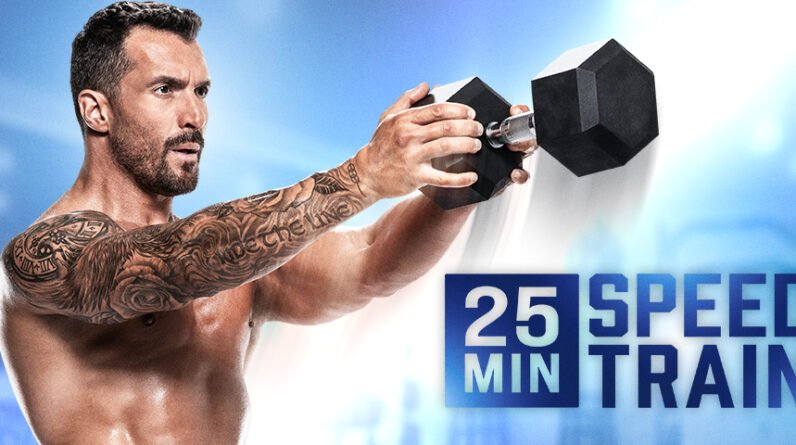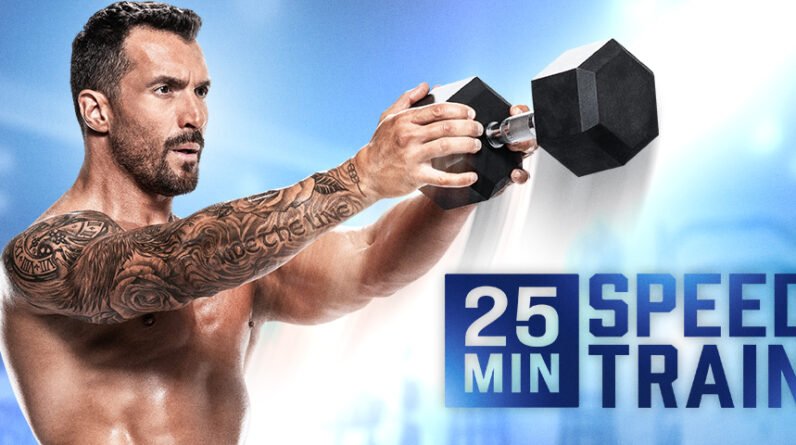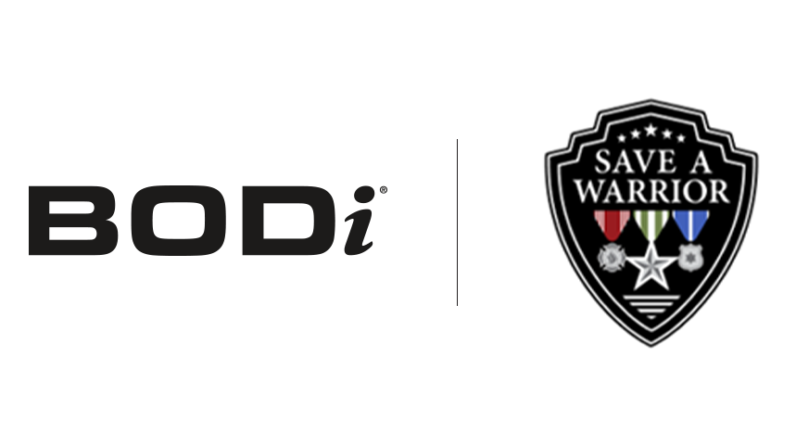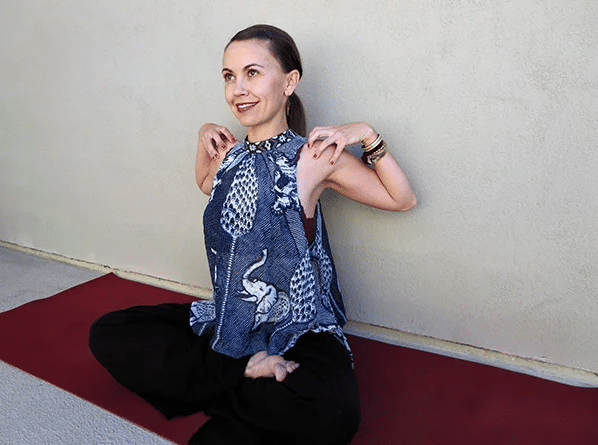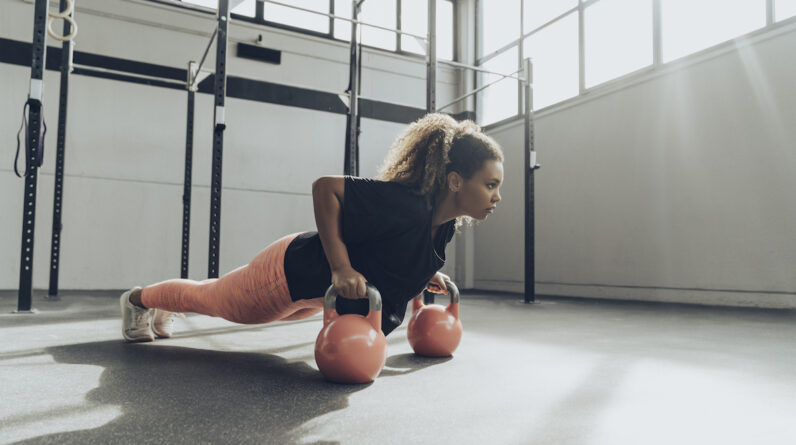
Core exercises and kettlebells might not sound like they go hand in hand. The former usually consists of bodyweight moves on the floor, and later adds a bulky load. But actually, a core kettlebell workout makes perfect sense if you’re looking for a dynamic, fun, and effective way to work your abs, obliques, spinal stabilizer muscles, and back—which are all part of your core.
Adding any sort of weight to an exercise creates a challenge for muscles, which naturally want to adapt (read: grow and get stronger) when they encounter something new. That’s why incorporating a weight into core work can be a great way to spark muscle growth and change in your core.
Experts In This Article
- Alena Luciani, MS, CSCS, founder of Training2xl
- Ben Lauder-Dykes, trainer at Fhitting Room
- Dasha Libin Anderson, NASM-PES, trainer, martial artist, and author of Kettlebell Kickboxing
- Roxie Jones, CPT, fitness coach and founder of BodyRox
While you can use any kind of graspable weight in core work, a kettlebell in particular ratchets up the intensity because the weight itself is so unwieldy.
“The odd shape causes the weight to be distributed unevenly, and your core muscles are continuously engaged throughout every motion to control the bell’s shifting center of gravity,” Kettlebell Kickboxing founder Dasha Libin Anderson previously told Well+Good about kettlebell core moves.
How to pick the right weight for a core kettlebell workout
Since kettlebells have that shifting center of gravity thanks to the fact that their position can change throughout a move (unlike a dumbbell, which stays stationary in your hand), intentionally picking a kettlebell weight that is challenging, but still under your control, is the first step to succeeding in this kind of workout.
In general when selecting the right load for an exercise, you want to find a weight where the last two or three reps in a set are a struggle to complete. So in a 15-rep set, reps 12 through 15 should be difficult.
However, there are some additional criteria for a kettlebell. Trainer Roxie Jones suggests trying to rack the kettlebell with one arm, which means pulling it up to your shoulder from hanging by your side. If racking the kettlebell causes you to sway your back, use some assistance from your other hand, or rely more on swinging momentum than your actual muscle strength, the weight is probably too heavy. Start with a 10- to 25-pound kettlebell, and go up from there until you can’t past the rack test anymore.
How to do a core kettlebell workout
After picking the right weight, you want to identify some movements that will challenge your core, and use the kettlebell to its best advantage.
First off, when formulating any workout—whether it’s full-body or focused on a specific muscle group—you want to aim for balance. That means working your muscles in a way that’s even, not lopsided. The same is true for the core. Since the core includes the front, back, sides, and innards of your trunk, a core workout should contain some variety meant to engage each part of this area.
“Your core technically includes your pelvic floor muscles, your internal and external obliques, rectus abdominis and all the other superficial layers you think of when someone says six-pack, the erector spinae and multifidus [which are the rope-like muscles that run along either side of your spine on your back and help stabilize it], and all the deeper, smaller muscles in your trunk,” Alena Luciani, CSCS, founder of Training2xl, previously told Well+Good about core exercises.
With the goal of working in 360 degrees in mind, you want to select exercises that have variety, supporting muscle growth that suits the multi-functional purpose of this ultra-important muscle group.
“Our core has many different functions,” says Fhitting Room instructor Ben Lauder-Dykes, who is leading Well+Good’s Trainer of the Month Club this November. “It can flex, it can resist, it can brace. So we want to make sure that we challenge it in multiple different ways.”
A great way to do this is by changing up your position. Consider doing some standing core exercises, which will test your balance and work those stabilizer and back muscles; a move that involves a twist to work your obliques; incorporating the kettlebell into an isometric hold like a plank; plus something that resembles a weighted crunch for the rectus abdominis.
A 17-minute core kettlebell workout
You don’t need to create the perfect core kettlebell workout all on your own, because Lauder-Dykes has already done it for you. Plus, it takes less than 20 minutes to complete!
“We’ve got a mix of different exercises today and they’re gonna challenge your core in slightly different ways,” Lauder-Dykes says. The exercises will also vary in format. You’ll start with a slower-paced circuit, then pick up the speed for the second round once you’ve got a handle on the moves. You’ll end the session with a six-minute AMRAP (“as many reps as possible”) set where you go all out for the final third of the workout.
“We’re going to start to build more strength as you repeat each exercise with a higher level of intensity each time you come back to it,” Lauder-Dykes says.
Here’s what this five-move core kettlebell workout has in store for you:
1. Slow march
Standing with your kettlebell racked at your chest, shift your weight to one leg, and then bring the knee of the opposite leg up to hip-height, so your thigh is parallel to the floor. Place it back down. Alternate legs, repeating slowly and with control.
2. Half-kneeling halos
In a half-kneeling position, hold the kettlebell under your chin. Keeping your body still, rotate it around the back of your head, and then reverse direction and repeat.
3. Plank pull throughs
Begin in a plank with the kettlebell placed under your chest. Shifting the weight into your left arm, grab the kettlebell with your right hand and pull it over toward your right side, placing it under your right hip. Put your right arm down, then grab the kettlebell with your left hand, and pull it over to your left hip. Repeat.
4. Kettlebell dead bugs
Lie on your back with your hips and knees bent at 90 degrees in a tabletop position. Hold the kettlebell above your head with your arms straight and perpendicular to the floor, so you’re reaching the kettlebell up to the sky. Straighten one leg out toward the front of the room, and then bring it back to the starting position. Repeat with the other leg, keeping your core engaged and the kettlebell stationary.
5. Russian twists
Sit with your sitz bones on the floor, your knees bent, and your torso in a 45-degree angle. Remove your toes from the floor so just your heels are touching the ground—this way you are mostly supporting your weight with your torso, not your legs. Hold the kettlebell with both hands in front of your chest. Twist your torso and the kettlebell to one side, return to center, and repeat on the other side.
Ready to work that core? Grab a weight and get started:


